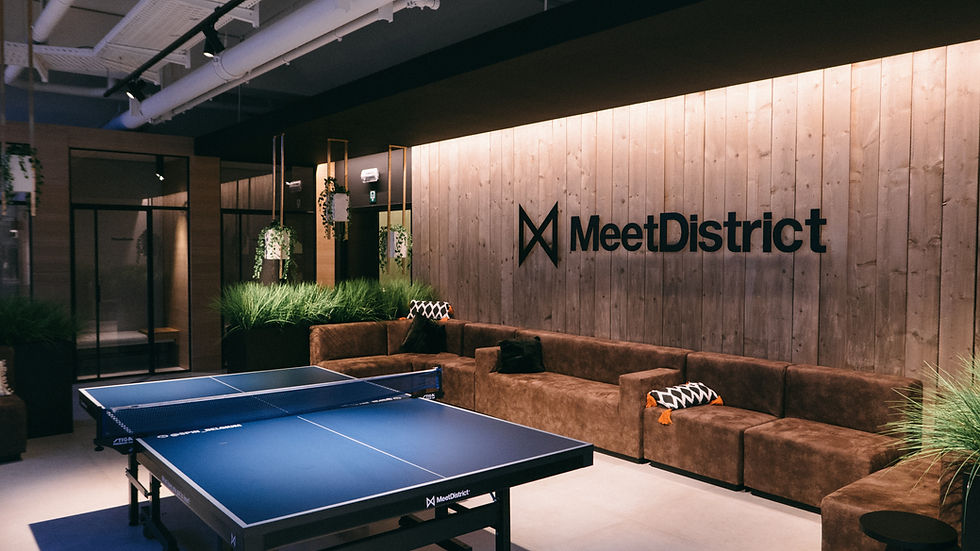Design Forecasts + Architectural Trends for 2020 and Beyond by Laurence Carr, Interior Design
- Bergen County Moms

- Jan 19, 2020
- 3 min read
Updated: Jan 22, 2020

As we pass the threshold between decades, we find ourselves facing unique global and environmental challenges, but also unique solutions. The public thirst for design that is as functional as it is beautiful, and as sustainable as it is technologically advanced, has grown exponentially over the past 10 years, and that trend will only intensify in 2020 and beyond.
Around the turn of the new year, I like to write about trends in the design and architectural industries and provide forecasts for the coming 12 months. This year, though, rather than focus on specific product trends, I want to take a step back to examine a broader point of view, inspired by the Gensler Design Forecast’s “Shaping the Future of Cities” report. By better understanding how urbanization, lifestyle, technology, and economic development will shape the landscape of the coming years, we can also better predict not only the needs of design, but the landscape of the next generation.

LIFESTYLE
When architects and designers create spaces, we should focus increasingly (and, soon, unwaveringly) on the human experience, connecting people to the places where they live, work, and play. Whether with regard to aesthetics or sustainability, our job is to mold designs to fit people, rather than expect people to mold themselves to fit our designs. Sustainable technologies work best when people are excited to use them, or when they offer a sense of luxury rather than deprivation.
A perfect example is smart technology. By promoting users’ autonomy and catering to individual needs, it provides a desirable service, yet it can also help conserve energy with intelligent sensors and automations. If technology is designed in service of people, we can become a driving force for efficient, livable, and sustainable cities.
Today, we live in the greatest period of urbanization in human history, with more than half of the world’s population living in urban centers. As a result, we can expect to see a continued focus on designs and technological innovations that tailor to city dwellers over the next decade.

WORKPLACES
We’re already starting to see how this logic can also be used to have a profound impact on office environments. High-performing people want to work in high-performing buildings, which spur innovation and promote collaboration between employees. Again, the focus is first and foremost on the human experience. We can look at a few examples to better understand the upcoming landscape.
Consulting companies and those with large real-estate portfolios are studying how workers use spaces, and are then designing around those habits with AI and intelligent building materials. Financial services companies, meanwhile, place a premium on the customer experience, and are using such technologies in their products and services to build stronger connections with consumers. Energy and science companies must be especially adaptive, with agile workplaces that can respond quickly to change.
Overall, as more companies prioritize the human experience, building vibrant communities with intelligent design, we’re seeing a new gold standard emerge in office buildings everywhere.

NEW MATERIALS
What’s particularly noteworthy is how the building industry is finally beginning to use new, more sustainable materials, which represents a vital transformation. The housing sector is responsible for nearly 40% of human energy usage and produces a third of global greenhouse gas emissions. We have an urgent responsibility to use more sustainable solutions in our designs that can meet, if not exceed, net zero standards.
There are also plenty of economic advantages to using materials that are more energy-efficient in both construction and design, considering that materials alone can represent 50% of the cost of a residential project. These materials are also often healthier, and are able to meet rigorous wellbeing certification standards, with greater transparency of their chemical components.
Continuing to push the envelope with smart and sustainable materials is key to making our homes safe and healthy sanctuaries.
PRODUCT DEVELOPMENT
Great products begin with great insight, and great insights are powered by broad perspectives that consider cross-disciplinary thinking.
Product development is at its best when it considers the human experience first, understanding people’s interactions with the built environment and then designing around those interactions, as well as people’s evolving needs.
In this next decade, being adaptable in the face of cultural and environmental evolutions will be essential.
We must be ready for disruption, but also innovation. New markets will emerge, and with them new opportunities and spaces. As we look to design those spaces, we should do so with sustainability and wellness in mind.
Laurence Carr is founder & CEO of Laurence Carr Design, an award winning interior design firm in New York City providing full service and e-design services to clients. She creates exquisite holistic interiors that promote mindful living and harmony, while attaining a level of sophistication through layering modern art, furniture, antiques and accents. Born in France, Laurence has 20 years experience in design, the performing arts, and fashion. She has been nationally published and is a frequent speaker and panelist in major industry related events.







Comments